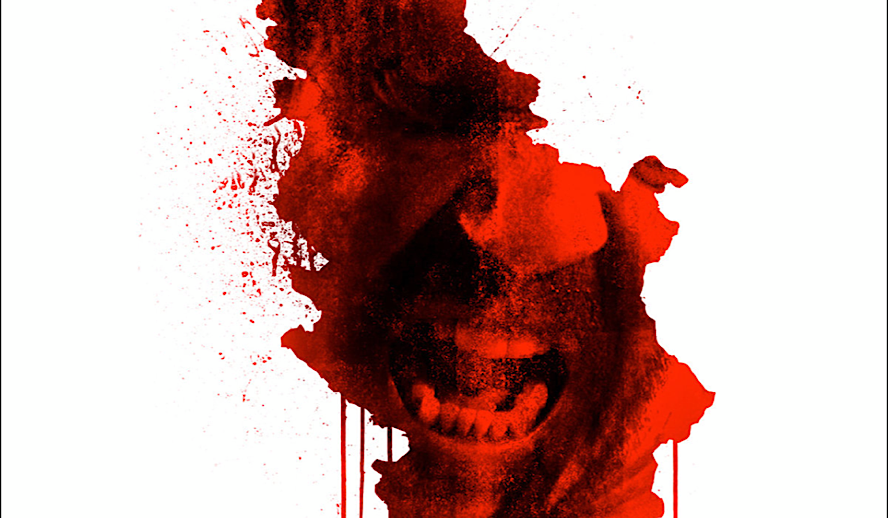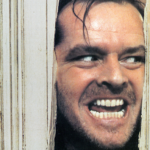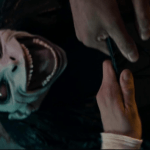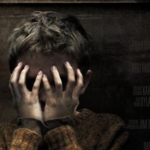Table of Contents

Photo: ‘A Serbian Film’
While some films live on in accepted infamy, becoming integrated into our preconceived standards for what a horror film should or should not do, others dare to break the mold. But when does artistic innovation go too far? When does a vision become too violent? What are the implications of films that forsake human courtesy, and go beyond the pale? This article will review a small collection of films that chose a different approach to Cinema, and have been subsequently seared into our collective Cinematic memories for their efforts.
Related article: EXCLUSIVE: ‘Dune’ Full Commentary, Reactions, Making Of – Timothee Chalamet, Zendaya, Oscar Isaac
Related article: ‘No Time to Die’ Royal Premiere & Reactions – Daniel Craig, Rami Malek, Léa Seydoux & More
Related article: ‘Halloween Kills’ Full Commentary & Reactions, Behind the Scenes – Jamie Lee Curtis & More
Related article: The Hollywood Insider’s CEO Pritan Ambroase: “The Importance of Venice Film Festival as the Protector of Cinema”
Controversial Horror Films:
‘Salò, or The 120 Days of Sodom’ (1975);
I’ve decided against starting off slow.
In your first foray into debaucherous Cinema, you will quickly and undoubtedly stumble upon ‘Salò’ or ‘The 120 Days of Sodom’. Based on the unfinished 1785 novel by Marquis de Sade, whose name is the literal origin of the word ‘sadist’, ‘Salò’ certainly treats the content of this famously controversial work with as unflinching honesty as the pervert de Sade himself. Imagined through the perspective of influential Italian director Pier Paolo Pasolini, the tale is as simple as it is debaucherous: an esoteric collection of libertines enslave numerous teenagers (with the oldest being 15) for their downright blasphemous sexual whims and desires. Seemingly a raw representation of a man’s sexual perversion and taboo preferences, ‘Salò’ utilizes deviance as an outlet to express broader themes of corruption, totalitarianism, and exploitation. All things considered, controversy is embedded within the narrative of Salò as an enduring tale of sexual perversion, what with utilizing the enslaved bodies of young people to fulfill the aberrant needs of a group of wealthy fascists.
‘Salò’ is so remembered because it doesn’t stop at mere sexual violence (note the sarcasm) like other films on this list, though it does all serve the sexual preferences of the antagonists. This film endeavors into scat, torture, and overall blasphemy, and while this is certainly evocative for the artistic perspective of Pasolini, it is similarly repellant through the sheer caliber of taboo.
‘A Serbian Film’ (2010):
‘A Serbian Film’ is another crash course film in the introduction to Cinematic horror controversy. When porn star Miloš (played by Srđan Todorović) is enlisted to perform in a pedophilic snuff film as a last-ditch effort on his deteriorated career, both he and his family are inadvertently intertwined with the desires of a licentious collection of producers. All for the name of pleasure – or art – he ends up participating in unspeakable acts, and changing the course of his life forever in some of the most memorable instances of controversial Cinema of the past two decades.
Related article: MUST WATCH – The Hollywood Insider’s CEO Pritan Ambroase’s Love Letter to Black Lives Matter – VIDEO
Subscribe to The Hollywood Insider’s YouTube Channel, by clicking here.
A whirlpool of pedophilic deviance, it’s difficult to even discuss the content ‘A Serbian Film’, but this is all apparently not without an overarching purpose. Director Srđan Spasojević crafted the film as an artistic commentary on the way that the Serbian government has exploited their people, just as our protagonist and various victimized characters suffer for the hedonistic desires of an indiscernible elite. This metaphor is stretched beyond the limits of typical morality, indulging in the great, perverse beyond for points that – let’s be honest – could have probably been portrayed with a fraction of this depravity. But hey, that’s art.
There’s a reason that this film touts the tagline ‘banned in 46 countries’, so fresh watchers should beware for a viewing experience worth shielding themselves from. But, that’s for them to decide.
‘The Last House on the Left’ (1972):
While ‘The Last House on the Left’ is one of the more mainstream on this list, it is no less disturbing in the nature of controversy. The directorial debut of the now-legacy, Wes Craven, it was originally written as an overtly pornographic, pure exploitation film as a vessel to portray raw, senseless violence. After years of war and glamorized violence, he felt that a visceral display of sexual assault and brutality would be the best evocation of the growing cultural misunderstanding towards real, tangible violence and pain.
Populated by a handful of inexperienced actors, with young actresses Sandra Peabody and Lucy Grantham at the forefront, ‘The Last House on the Left’ takes no prisoners in this manmade realm of saturated snuffiness. When two girls on their way to a rock concert stumble upon the evil squad of the sadistic Krug Stillo, they are swept up in a world of violence, assault, and humiliation. This is most remembered through multiple scenes of sexual violence.
Consider this influential, as following the release of the film, critics panned the content for being too vulgar and underlyingly misogynistic in the portrayal of rape and sexual violence. While Craven’s intention may have been to symbolically indulge Cinematic violence for a statement, many seemed to feel that it contributed to a growing acceptance towards Cinematic instances of sexual assault as a cheap and disrespectful avenue for ‘terror’. Whether Craven went too far, well, that’s for you to decide.
‘I Spit on Your Grave’ (1978):
Also known by the title ‘Day of the Woman’, ‘I Spit on Your Grave’ is the second on this list of the influx of 70s sexploitation films. It reigns supreme with the longest rape scene in Cinematic history, at roughly 25 minutes long. Directed by Meir Zarchi and starring his eventual wife Camille Keaton, ‘I Spit on Your Grave’ is exorbitantly brutal and brimming with the typical themes of feminine vengeance that is now so integral to any similarly themed film. It also mirrors the structure of the aforementioned ‘The Last House on the Left’, with an innocent young woman endeavoring into the Connecticut countryside in pursuit of private refuge being unfortunately noticed and plotted against by a collection of grimy local men who hope to take advantage of her isolation.
Limited Time Offer – FREE Subscription to The Hollywood Insider
‘I Spit on Your Grave’ is a clear attempt at Cinematic female empowerment, with clear themes of taking back agency after a violent assault, and the satisfaction of sweet, sweet, nuclear revenge on a group of violent gang rapists. While some could argue that this film gives the ‘tortured woman’ power, it does not do so before degrading her as violently as possible. This debate between empowerment and exploitation lives on at the heart of this legacy, and that’s is part of what turned this film into such a memorable cult classic.
‘Faces of Death’ (1978):
Even if you haven’t seen ‘Faces of Death’, the legacy lives on like a DVD collecting dust in the stack of films that you were never allowed to watch. The mockumentary style film consists of a mixture of real and performed death scenes, both animal and human, accident and murder, and the contents go on. Presented as a journey through the many, you guessed it, ‘Faces of Death’, the narrator and pathologist, Francis B. Gröss, is in the process of studying the transitional period between life and death. The macabre footage includes clips of accidents purchased from news stations, suicides, autopsies, and animal deaths, as well as death scenes that were staged by the director, John Alan Schwartz. In fact, one of the most infamous scenes – the monkey brain eating cult being quite memorable to me, personally – were actually orchestrated by a professional cast and crew. I can’t say I’m disappointed.
‘Faces of Death’ remains relevant because of the effect it had at the time, and the compilation style that contributed to it becoming a cult classic. In the 80s, 14-year-old Rod Matthews was sentenced to life in prison after murdering a peer, Shaun Ouillette, in the nearby woods; Matthews would tell a counselor that he decided to kill someone after viewing this film, ‘Faces of Death’, which exposed him to real instances of both human and animal death. While this story is endlessly tragic, it provides some context for the reaction of the public to this instance of ‘immoral Cinema’.
‘Cannibal Holocaust’ (1980):
‘Cannibal Holocaust’ was the film that inspired this list. Made during what was termed the ‘cannibal boom’ in Italy, this film about indigenous cannibalistic tribes in the Amazon rainforest is long considered one of the most controversial of all time. It also joins ‘Faces of Death’ in the mondo film genre, where the structure resembles a mockumentary, placing viewers alongside the vulnerable and out-of-place filmmakers in a travelogue format to – in this context – observe the dichotomy of civilization versus uncivilization.
Related article: The Hollywood Insider’s CEO Pritan Ambroase: “The Importance of Venice Film Festival as the Protector of Cinema”
Related article: The Masters of Cinema Archives: The Hollywood Insider Pays Tribute to ‘La Vie En Rose’, Exclusive Interview with Director Olivier Dahan
Related article: – Want GUARANTEED SUCCESS? Remove these ten words from your vocabulary| Transform your life INSTANTLY
Other than gore and violence, ‘Cannibal Holocaust’ has multiple instances of real animal cruelty. This is what elevates the film to an elite controversial status, as this genuine abuse tilts Cinema towards snuff. Over the course of this film, we see the death of one monkey (though two were killed for the production), one coati, one turtle, one tarantula, one boa constrictor, one squirrel monkey, and one pig. This movie was also confiscated following the premiere in Milan due to concerns of local officials that it was actually a found-footage snuff film; this included a potential human murder change that was, luckily, eventually dropped after a court hearing. Despite the abundantly sinister nature of this exploitation, this combination of true savagery, found footage realism, and enduring symbolism is as close to Cinematic snuff as we are going to get.
By Grace Smith
Click here to read The Hollywood Insider’s CEO Pritan Ambroase’s love letter to Black Lives Matter, in which he tackles more than just police reform, press freedom and more – click here.
An excerpt from the love letter: The Hollywood Insider’s CEO/editor-in-chief Pritan Ambroase affirms, “The Hollywood Insider fully supports the much-needed Black Lives Matter movement. We are actively, physically and digitally a part of this global movement. We will continue reporting on this major issue of police brutality and legal murders of Black people to hold the system accountable. We will continue reporting on this major issue with kindness and respect to all Black people, as each and every one of them are seen and heard.
Just a reminder, that the Black Lives Matter movement is about more than just police brutality and extends into banking, housing, education, medical, infrastructure, etc. We have the space and time for all your stories. We believe in peaceful/non-violent protests and I would like to request the rest of media to focus on 95% of the protests that are peaceful and working effectively with positive changes happening daily. Media has a responsibility to better the world and The Hollywood Insider will continue to do so.”
Ways to support Black Lives Matter Movement to end systemic racism
More Interesting Stories From The Hollywood Insider
– Want GUARANTEED SUCCESS? Remove these ten words from your vocabulary| Transform your life INSTANTLY
– Compilation: All James Bond 007 Opening Sequences From 1962 Sean Connery to Daniel Craig
– Do you know the hidden messages in ‘Call Me By Your Name’? Find out behind the scenes facts in the full commentary and In-depth analysis of the cinematic masterpiece
– A Tribute To The Academy Awards: All Best Actor/Actress Speeches From The Beginning Of Oscars 1929-2019 | From Rami Malek, Leonardo DiCaprio To Denzel Washington, Halle Berry & Beyond | From Olivia Colman, Meryl Streep To Bette Davis & Beyond
– In the 32nd Year Of His Career, Keanu Reeves’ Face Continues To Reign After Launching Movies Earning Over $4.3 Billion In Total – “John Wick”, “Toy Story 4”, “Matrix”, And Many More
controversial horror films, controversial horror films, controversial horror films, controversial horror films, controversial horror films, controversial horror films, controversial horror films, controversial horror films, controversial horror films, controversial horror films, controversial horror films, controversial horror films, controversial horror films, controversial horror films, controversial horror films, controversial horror films, controversial horror films, controversial horror films, controversial horror films, controversial horror films, controversial horror films, controversial horror films, controversial horror films, controversial horror films

Grace Smith is a film critic and writer with 21 years of formative film exposure under her belt – and a focused interest in horror, surrealism, and substantial Cinema. Grace is passionate about The Hollywood Insider’s mission towards thoughtful and innovative media that expands audience perspectives towards entertainment. As a young writer and film-lover, Grace hopes to inspire readers towards not only broadening their horizons when it comes to cinematic media, but also raising their expectations.







